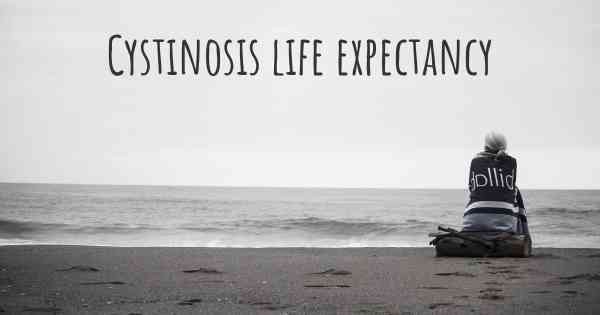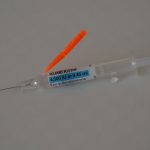
Contents
Life Expectancy of Someone With Cystinosis
With early diagnosis and treatment, the life expectancy of someone with cystinosis is about 50 years. Many patients survive into middle age.
While cystinosis has no cure, advancements in stem cell research and new drugs have improved survival rates. Regular medical screenings are advised due to the rarity of the disease.
What is Cystinosis?
Cystinosis, also known as cysteine storage disease, is a rare hereditary condition that affects 1 out of every 100,000 to 200,000 live births in the United States.
Cystinosis is an inherited metabolic defect that results in the accumulation of the amino acid cysteine in cell lysosomes. Excess cysteine can lead to the formation of crystals, impacting various organs such as the kidneys, eyes, liver, thyroid, muscles, pancreas, brain, and white blood cells. Without treatment, some forms of cystinosis can progress to renal failure.
Types of Cystinosis
Nephropathic Cystinosis
Nephropathic cystinosis appears in childhood and progresses rapidly. It is the most severe type.
Symptoms include developmental issues and Fanconi syndrome, which impairs kidney reabsorption of nutrients and minerals. This leads to stunted growth and can cause rickets. Cystine crystals in the corneas cause discomfort and light sensitivity, along with muscular pain, vision problems, infertility, thyroid and neurological system issues.
If left untreated, full kidney failure can occur by the age of 10 years.
Common symptoms of nephropathic cystinosis include:
- Growth failure
- Kidney dysfunction
- Polyuria or increased production of dilute urine
- Nutritional deficiencies
- Electrolyte imbalance
- Feeding difficulties
- Poor appetite
- Vomiting
- Dehydration
- Reduced secretion of sweat, saliva, and tears
- Heat exhaustion and dehydration leading to collapse
- Acidic blood
- Fever
- Headaches
- Hypophosphatemic rickets (very low levels of phosphate in blood)
- Bone abnormalities
- Muscle spasms
- Abnormal gait
- Difficulty walking
- Seizures
- Abnormalities in muscles, eyes, intestine, liver, brain, genitals, and other body parts
- Sensitivity to light
- Learning difficulties
- Difficulty with depth perception
- Difficulty identifying objects by touch
- Psychological and social problems
Intermediate Cystinosis or Nephropathic Juvenile Cystinosis
The average age of onset for intermediate cystinosis is about 8 years. The condition progresses slowly.
Symptoms are similar to nephropathic cystinosis but appear in adolescence. Major symptoms include kidney difficulties and ocular discomfort and sensitivity. Kidney failure is more common in late teens or early 20s.
Symptoms of intermediate cystinosis include:
- Reduced secretion of testosterone
- Delayed puberty
- Blindness
- Muscle abnormalities leading to difficulty swallowing and breathing
Non-Nephropathic or Ocular Cystinosis
The age of onset for non-nephropathic cystinosis varies but is usually noticed around middle age.
The most prevalent symptom is the accumulation of crystals in the corneas, causing discomfort and sensitivity to light.
Non-nephropathic cystinosis does not generally cause kidney difficulties or any other symptoms associated with cystinosis.
QUESTION
Causes of Cystinosis
Cystinosis is caused by a mutation(s) in the CTNS gene. When the CTNS gene is defective, cystinosin does not function properly, leading to cystine buildup within the lysosomes. Having a family history of the condition increases the risk of developing the disorder.
Cystinosis is inherited autosomal recessively, meaning a person must have two faulty copies of the CTNS gene for the syndrome to appear.
Diagnosis of Cystinosis
Cystinosis is suspected in children who have developmental delays and fail to grow at a normal pace. Tests that may confirm a diagnosis of cystinosis include:
- Physical examination
- Blood tests
- Urinalysis
- Kidney ultrasound or MRI scan
- Genetic testing
- Kidney biopsy
Treatment of Cystinosis
Treating cystinosis involves a multidisciplinary approach with a team of specialists including pediatricians, nephrologists, ophthalmologists, gastroenterologists, and psychologists.
Treatment options for cystinosis include:
Cystine Depleting Therapy
Cysteamine is a cystine-depleting chemical that significantly reduces cystine levels within cells. It helps delay and slow the progression of kidney disease and improves growth in children. Cysteamine can postpone the need for a kidney transplant.
Starting cysteamine therapy soon after diagnosis is crucial to prevent or reduce renal impairment. Long-term cysteamine therapy can prevent many nonrenal late-onset consequences of cystinosis, according to studies.
Cysteamine is available in various forms, including ophthalmic solution. It may be combined with proton pump inhibitors to prevent acid-related complications.
Side effects of cystine depleting therapy may include:
- Nausea
- Vomiting
- Gastrointestinal discomfort
- Compliance issues
Symptomatic Therapy
Symptomatic therapy involves increased intake of fluids and electrolytes to prevent dehydration. Sodium bicarbonate, sodium citrate, magnesium, and potassium may be administered to maintain normal electrolyte balance. Medications may include:
- Angiotensin-converting enzyme inhibitors to slow progression of renal disease
- Anti-inflammatory medications such as indomethacin to reduce urinary loss of water and electrolytes and improve growth rate
- Phosphates and vitamin D to correct impaired reabsorption of phosphate into the blood and prevent rickets
- Carnitine for pretransplant individuals to improve muscle strength
- Growth hormone therapy to improve growth
- L-thyroxine to treat hypothyroidism
- Insulin to treat insulin-dependent diabetes
- Testosterone to treat men with hypogonadism for development of secondary sexual characteristics
Other treatments for cystinosis may include:
- Proper nutrition
- Avoidance of bright light
- Implantation of a gastronomy tube for dysphagia, poor nutrition, and increased risk of aspiration
- Speech and language therapy
- Genetic counseling
Growth Hormone Therapy
Treatment with recombinant human growth hormone accelerates growth. Long-term treatment has been proven safe and effective for young children with nephropathic cystinosis before renal replacement therapy.
Renal Transplantation
Patients with cystinosis may require dialysis before a kidney transplant. Kidney transplantation is highly effective, as it cures renal Fanconi syndrome due to the absence of cystine buildup in the transplanted kidney.
Complications of Untreated Cystinosis
Possible complications of untreated cystinosis include:
- Kidney failure and ESRD
- Short stature
- Hypothyroidism
- Increased secretion of stomach acids
- Severe muscle wasting
- Difficulty swallowing and breathing
- Continued accumulation of cystine crystals in internal organs, leading to an enlarged liver and spleen
- High blood pressure
- Atherosclerosis
- Diabetes
- Eye pain due to spasm of the eye muscles
- Reduced night and/or color vision
- Loss of visual acuity
- Reduced brain function
- Hearing loss
- Kidney stones
- Infertility
- Death


